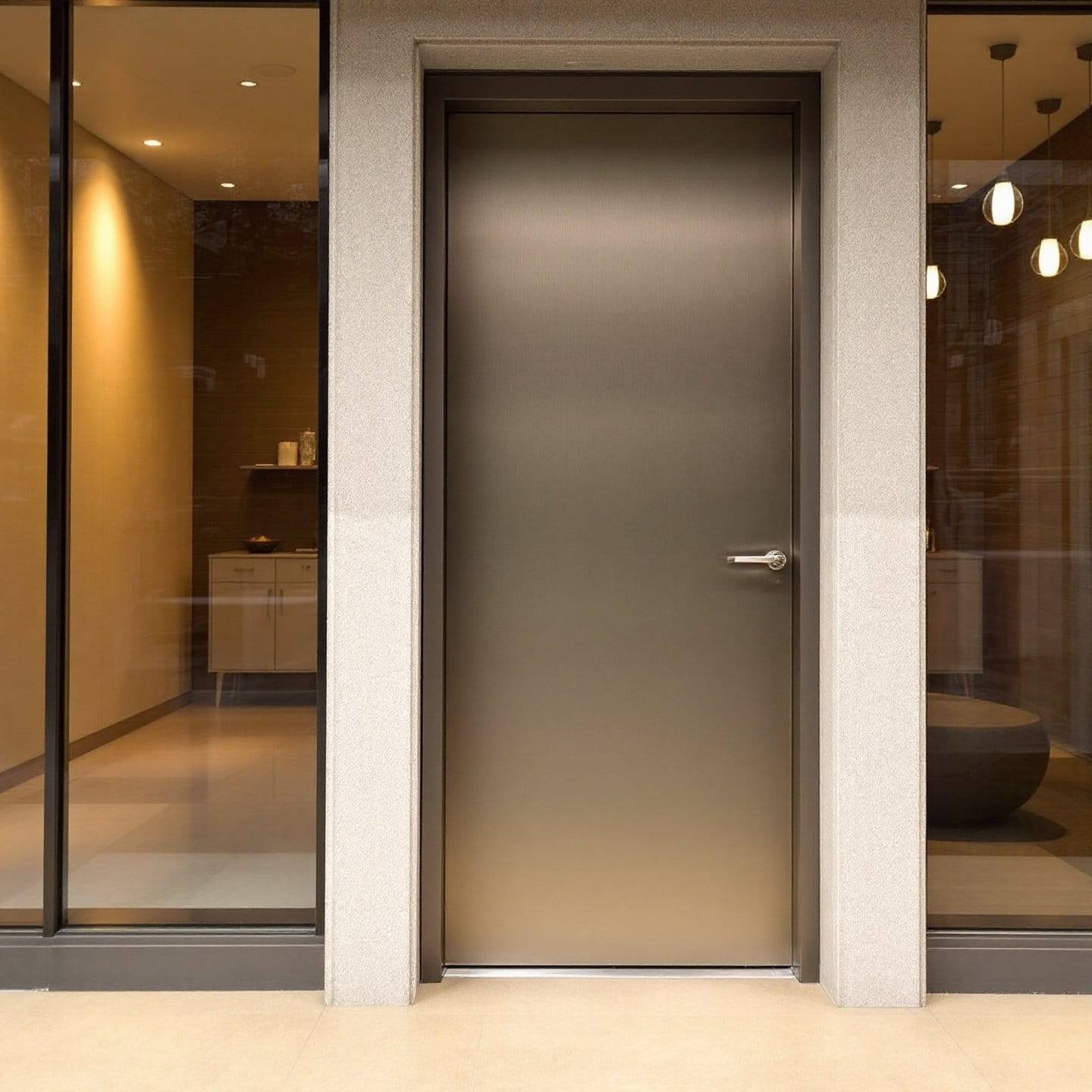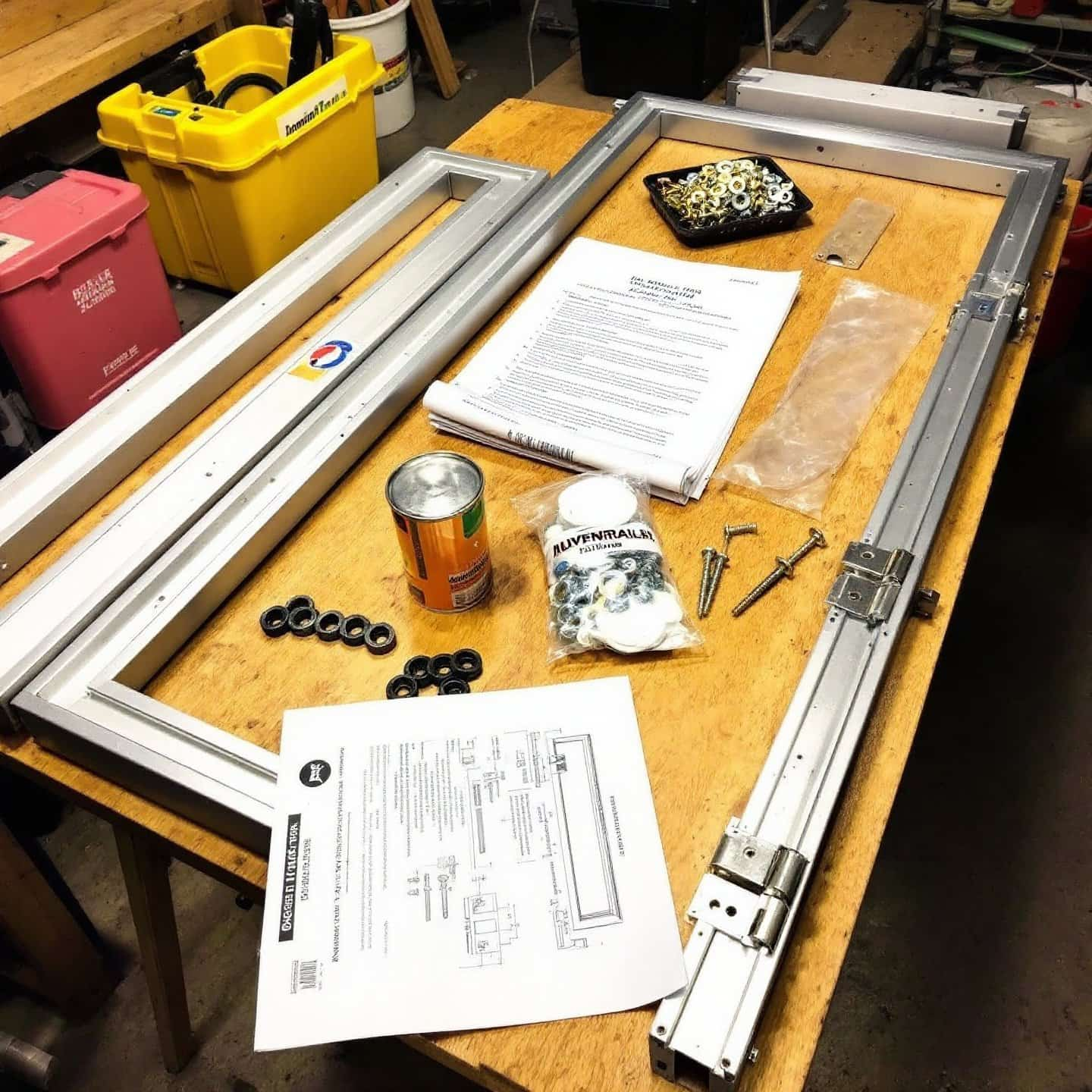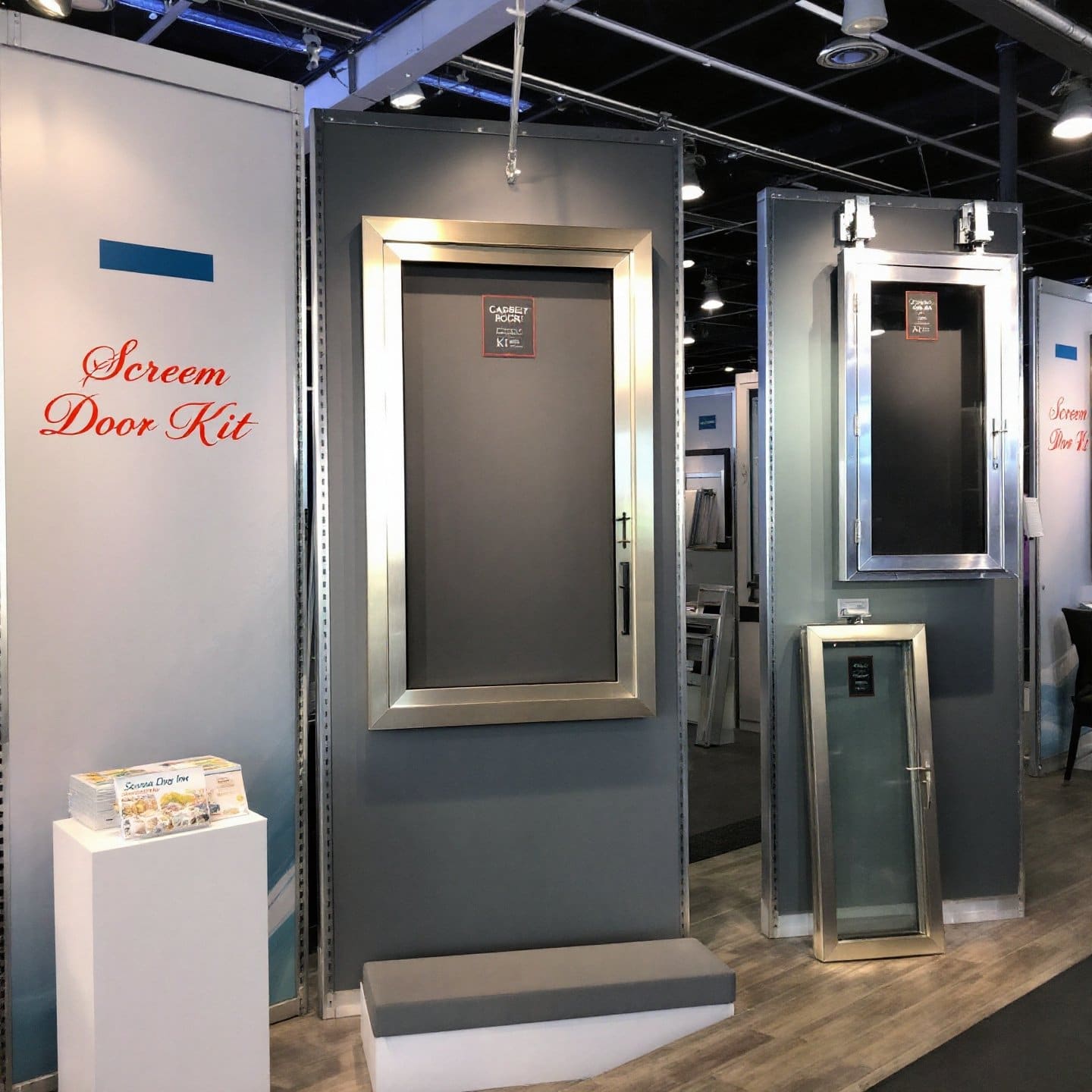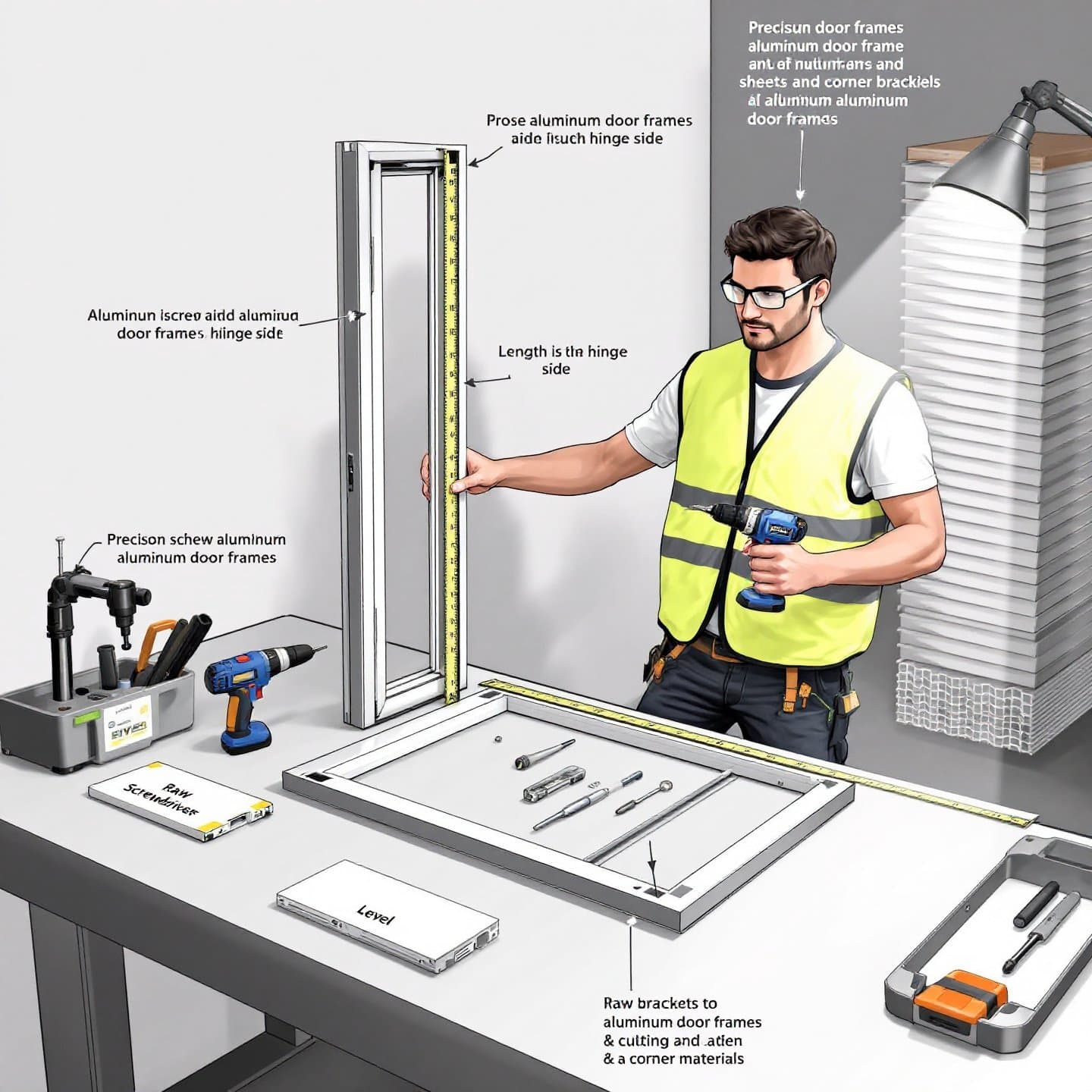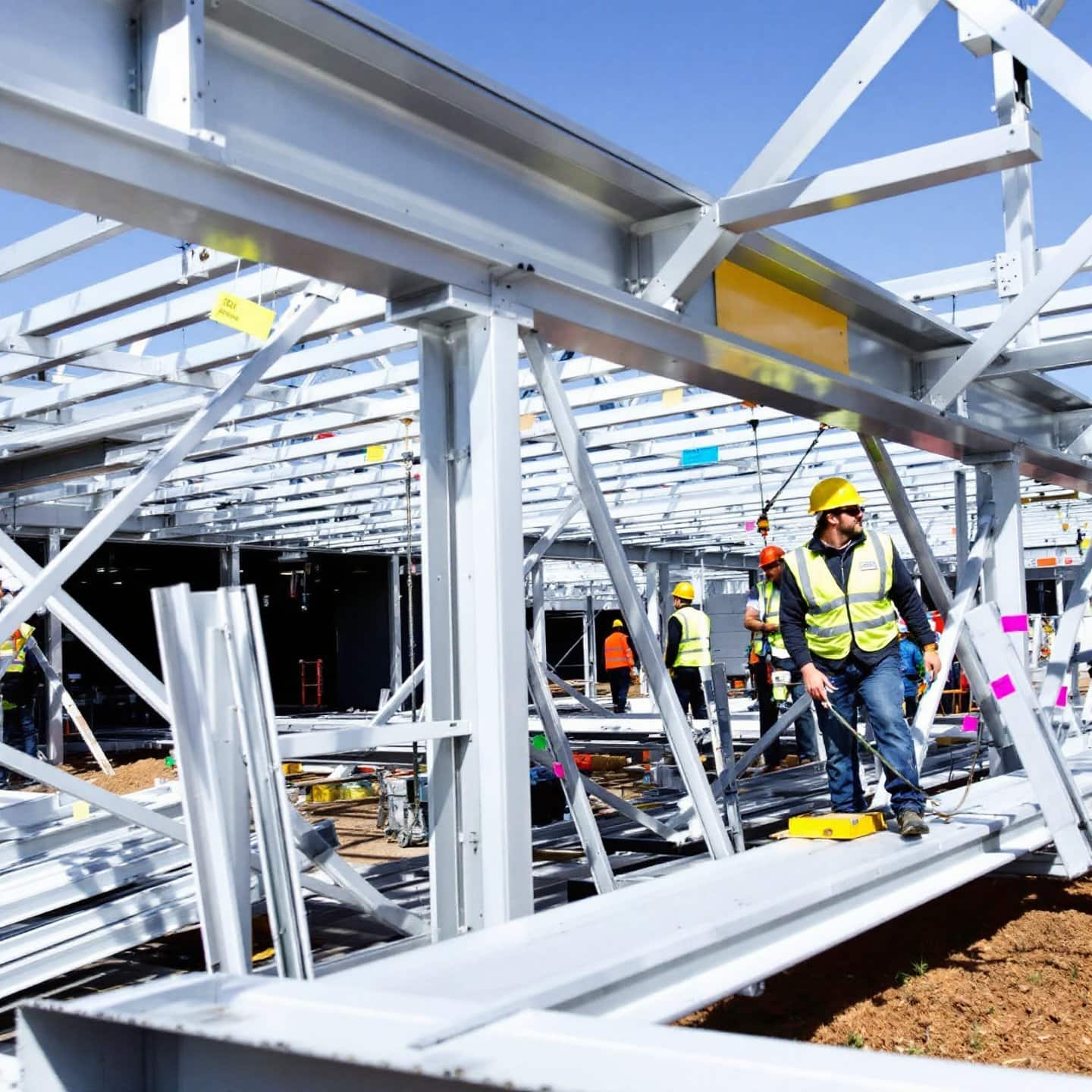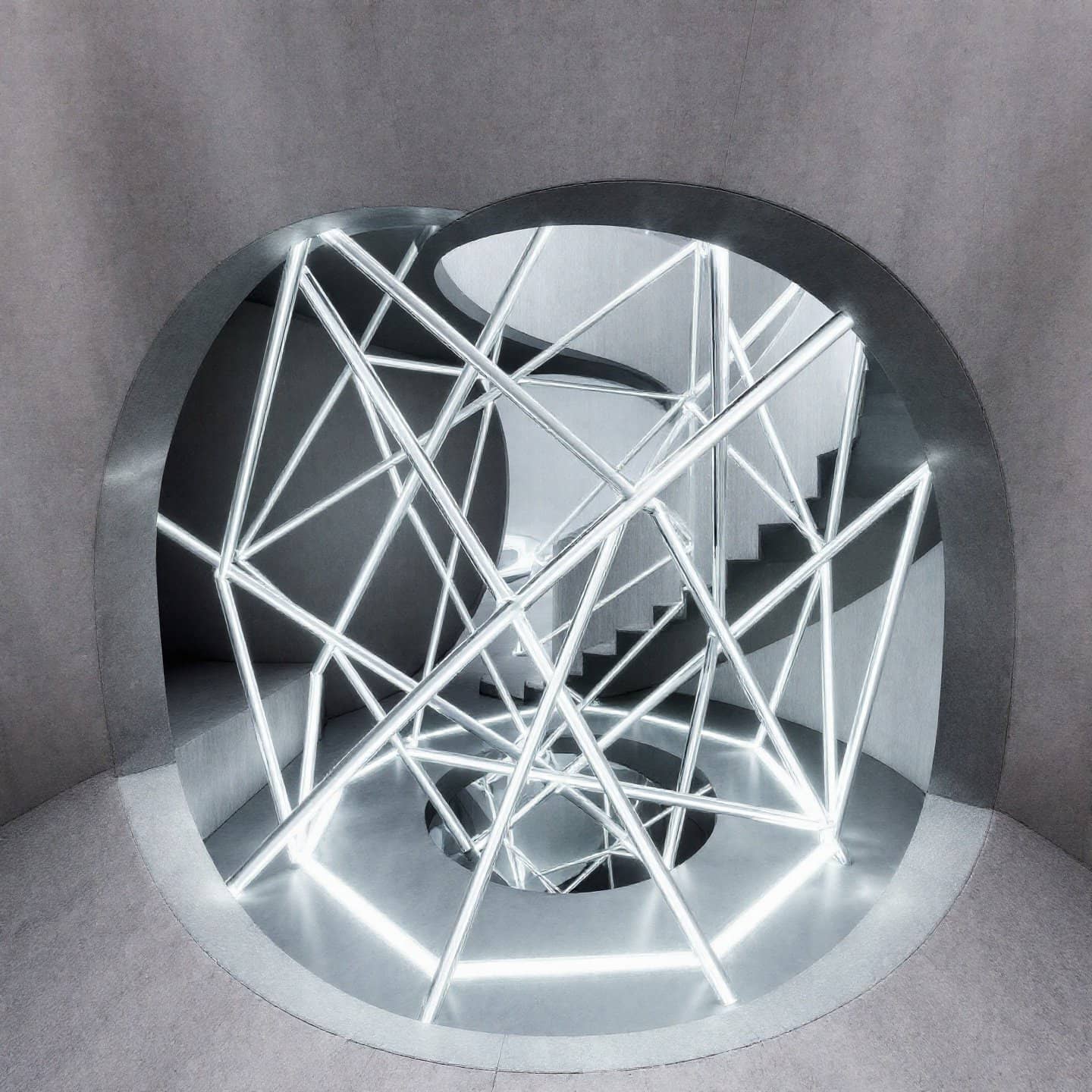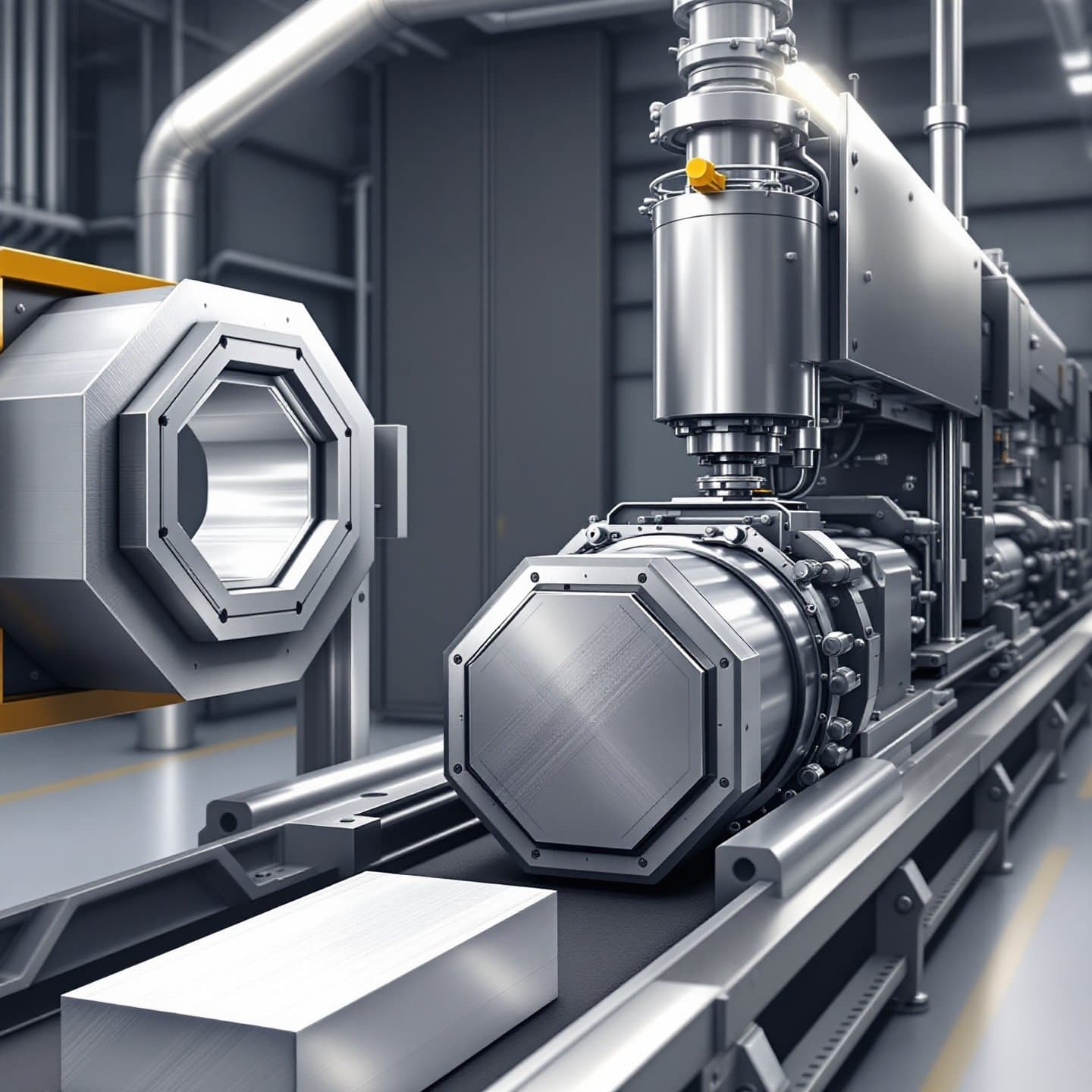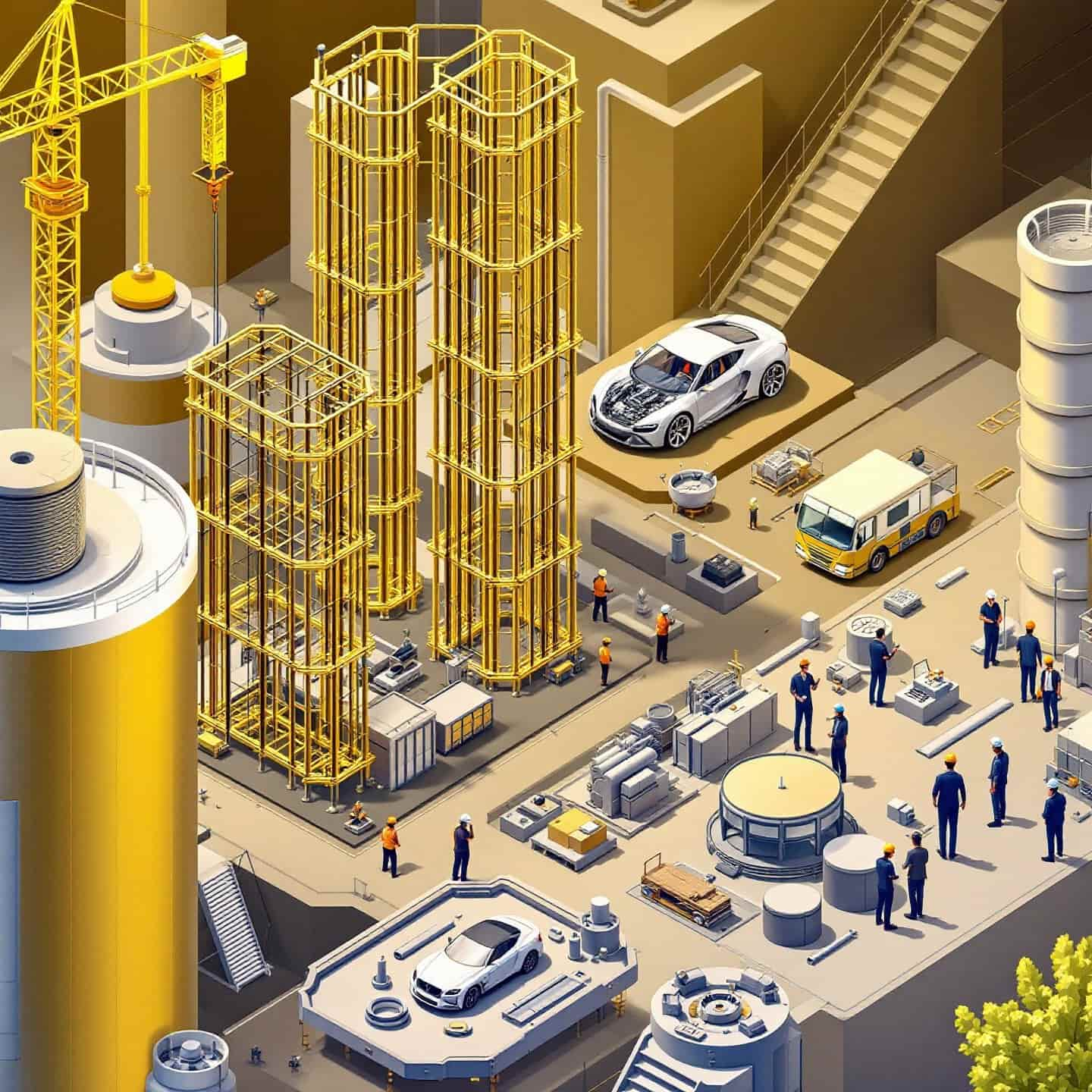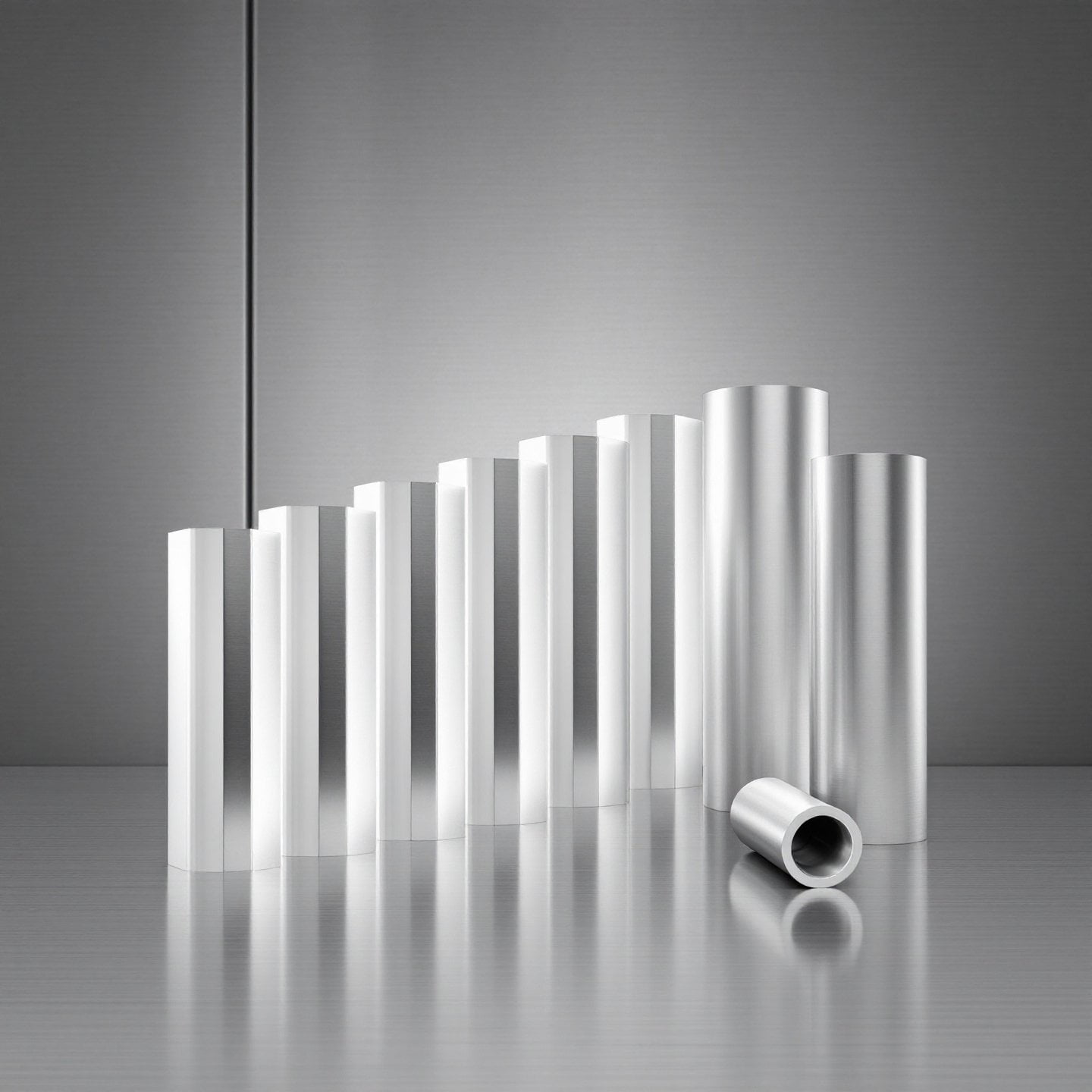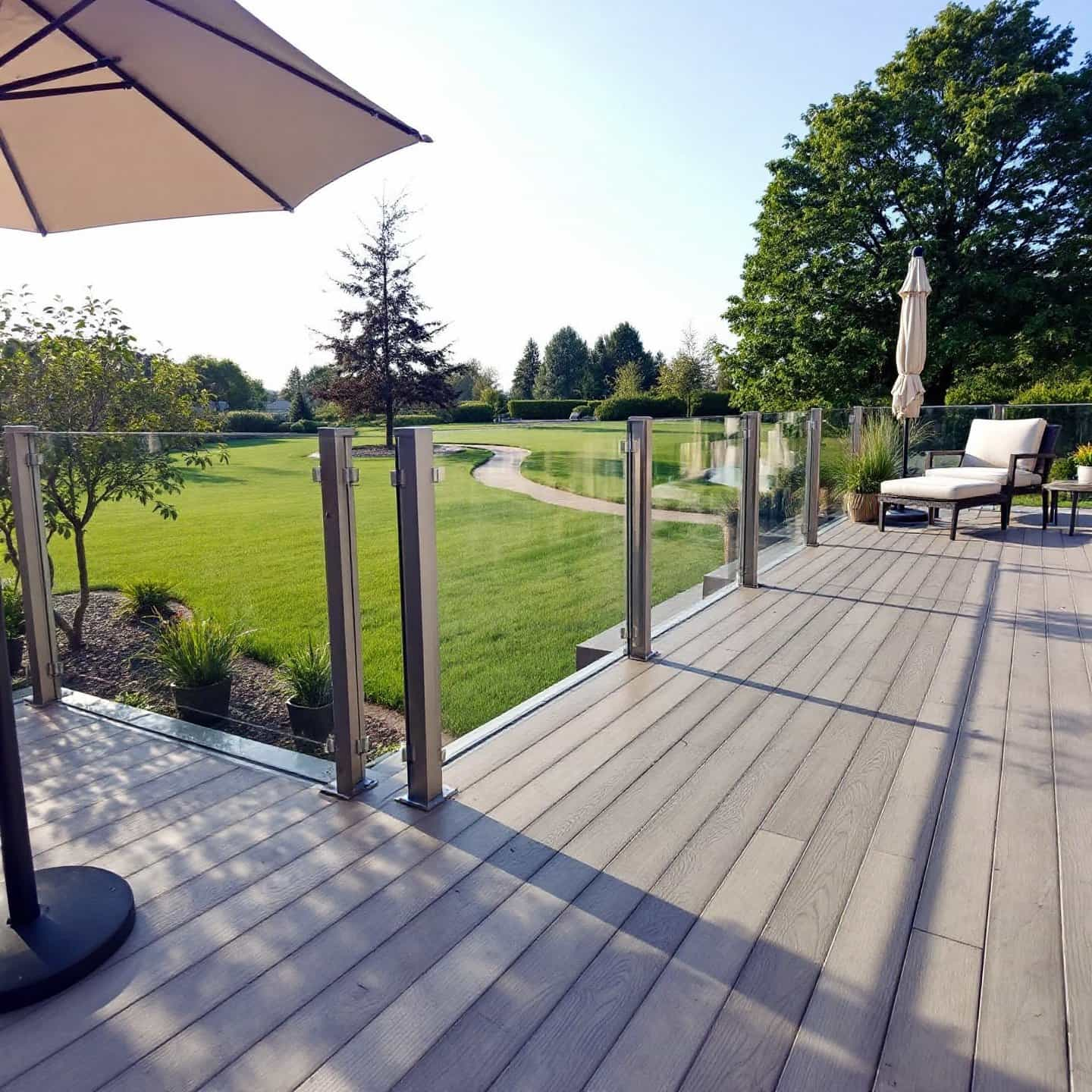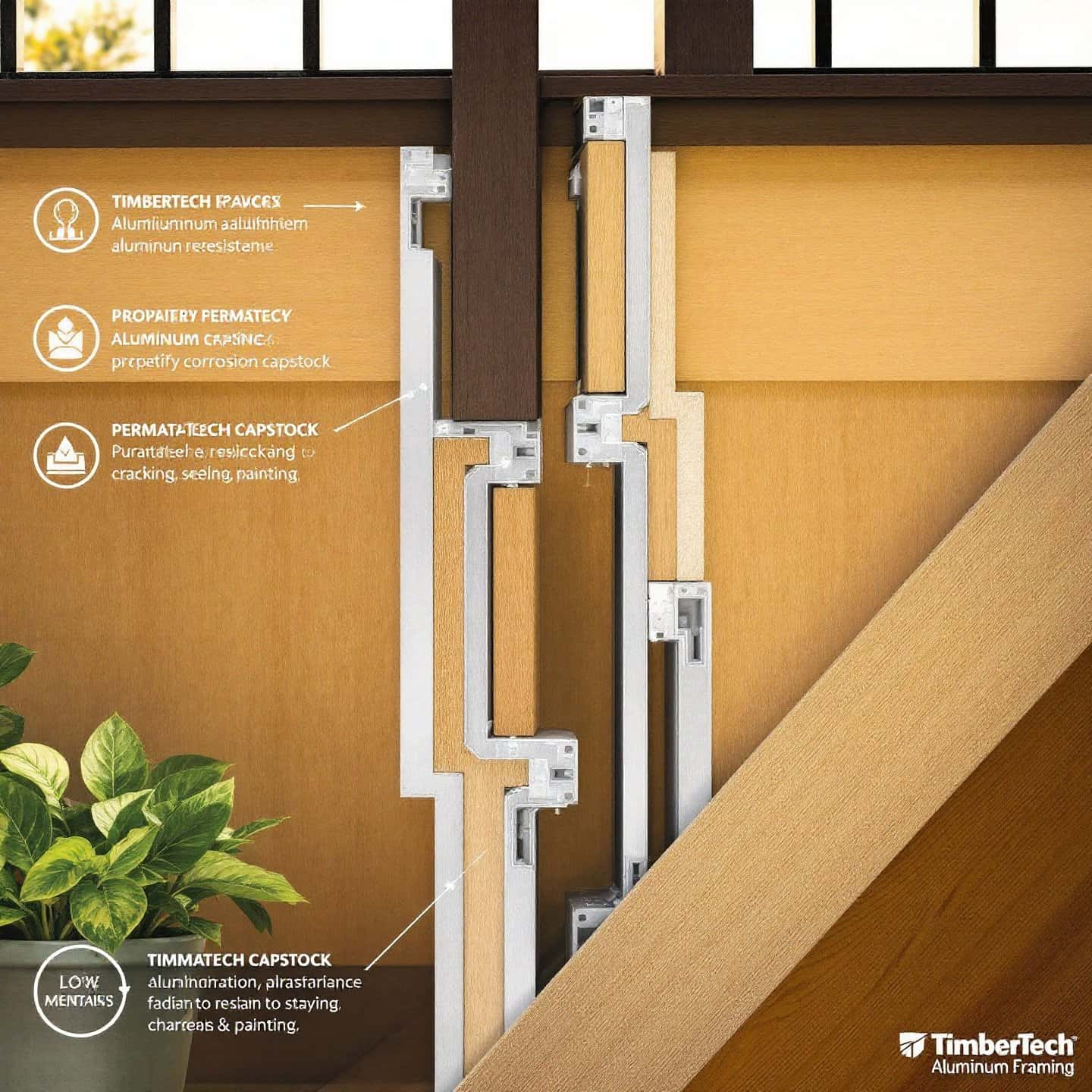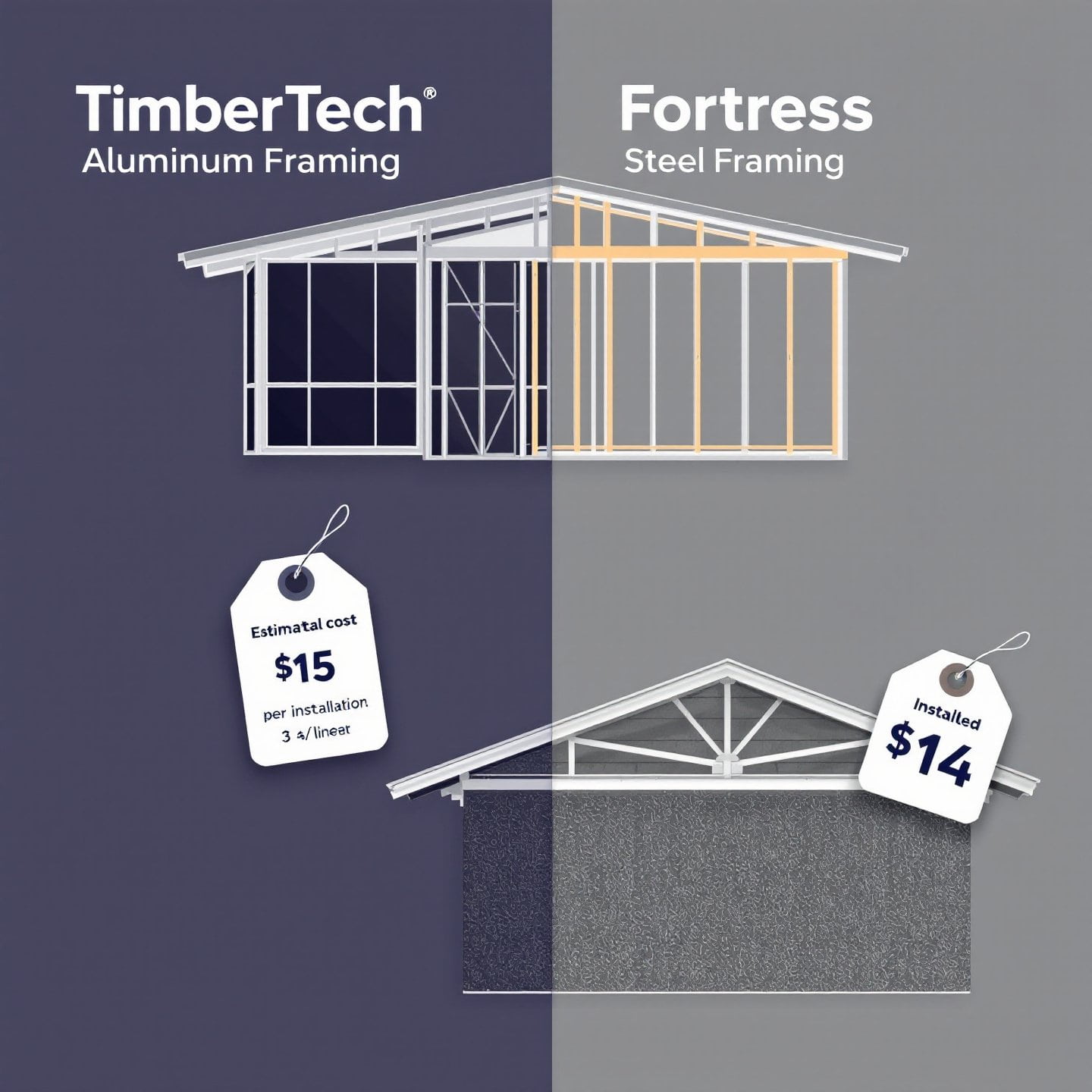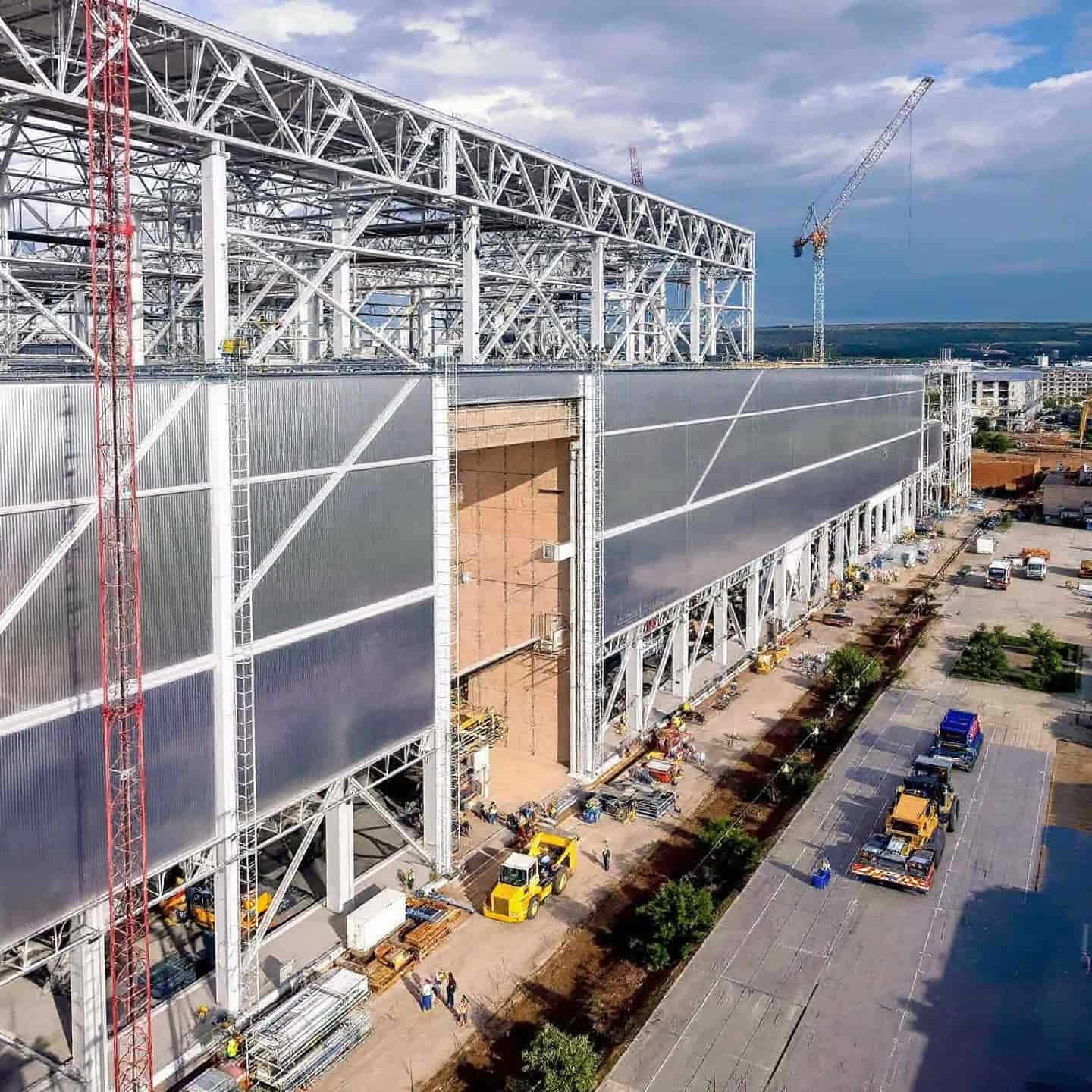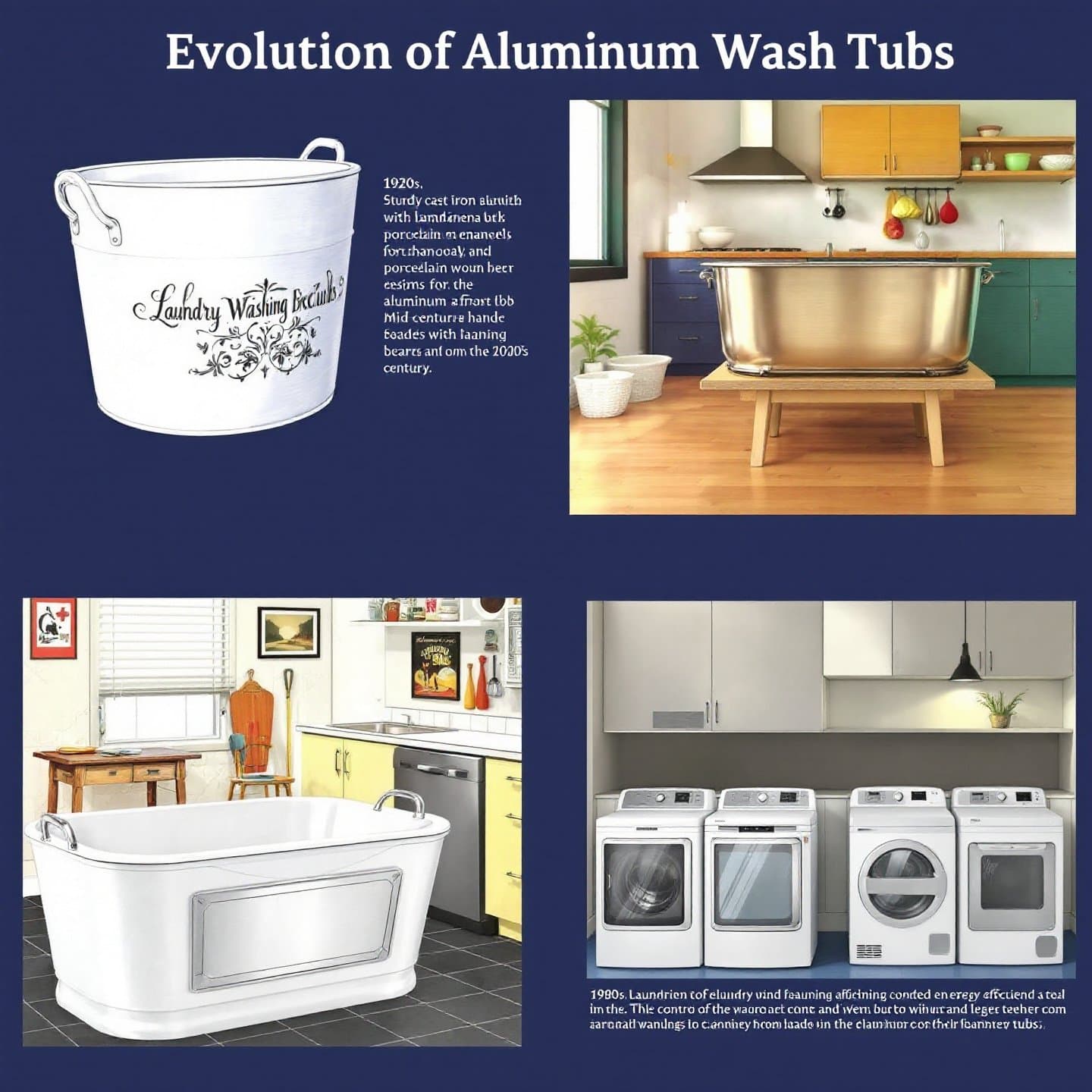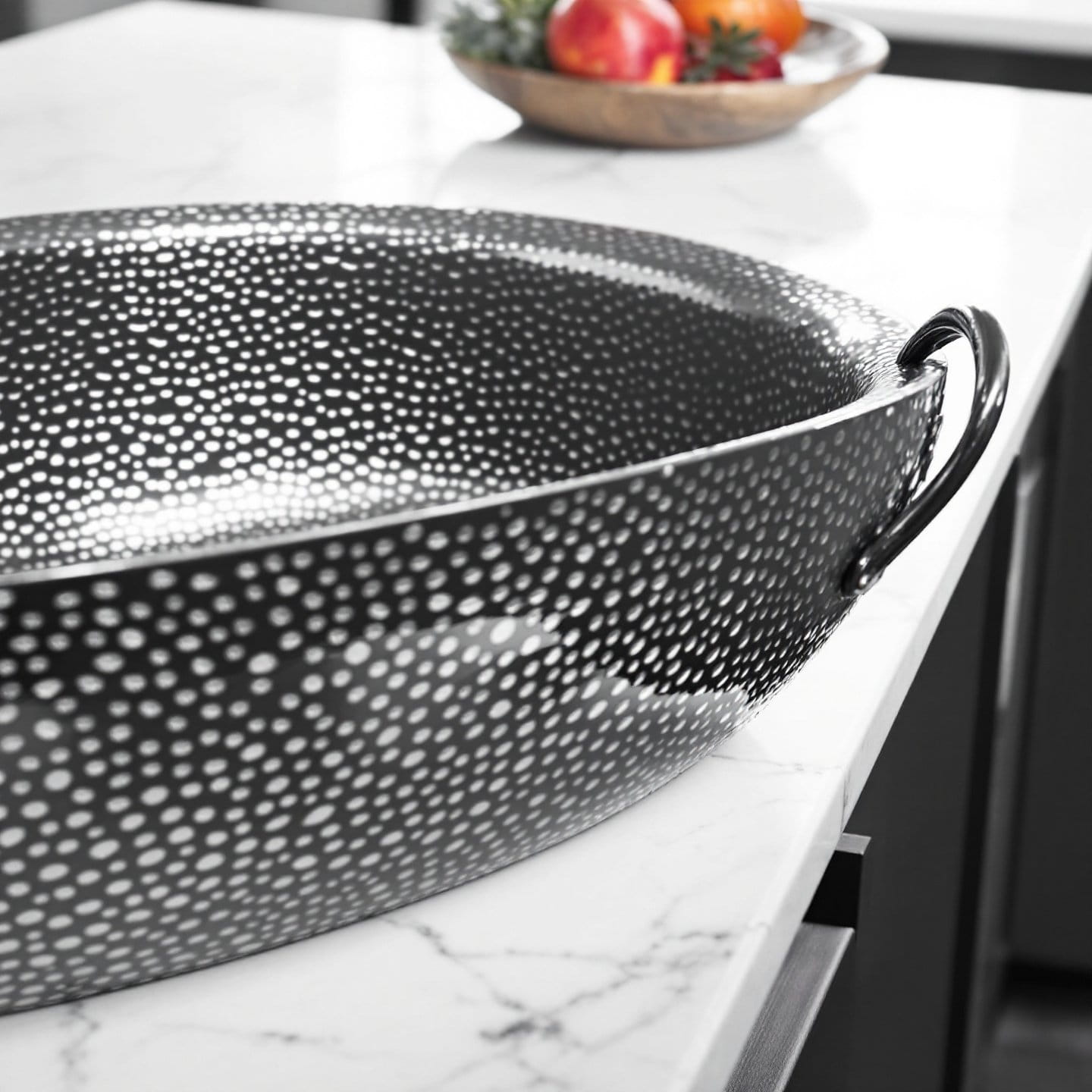Concrete Frame Structures vs. Aluminum Structural Framing: A Comparative Analysis
Concrete Frame Structures and Aluminum Framing: A Modern Construction Dilemma
In the realm of modern construction, the choice of structural materials plays a pivotal role in shaping the durability, efficiency, and aesthetics of buildings. Among the most prevalent choices are concrete frame structures, renowned for their robustness and fire resistance, which have been the backbone of skyscrapers, bridges, and residential buildings for decades. These structures, often referred to as concrete skeletons, leverage the strength of concrete and steel to support immense loads and withstand environmental challenges, making them a staple in urban landscapes ( Wikipedia ).
On the other hand, aluminum structural framing emerges as a compelling alternative, especially in applications requiring lightweight and corrosion-resistant solutions. This material is increasingly favored in modular construction, prefabricated buildings, and even temporary structures due to its ease of assembly and recyclability. The debate between concrete and aluminum framing is not just about material properties but also about the evolving needs of the construction industry, which now demands more sustainable and flexible solutions. As we delve deeper into this comparative analysis, we will explore how these materials stack up against each other in various aspects of construction.
Understanding the Fundamentals of Concrete Frame Structures
Concrete frame structures are a cornerstone of modern architecture, providing the skeletal framework that supports many of the world's tallest and most complex buildings. At their core, these structures consist of key elements such as columns, beams, and slabs, which together form a robust and interconnected system. Columns serve as the primary load-bearing components, while beams distribute loads across a building, and slabs provide the horizontal surfaces on which we live and work ( Understand Construction ).
Types of Concrete Frame Structures
- Reinforced Concrete Frame Structures: These incorporate steel reinforcement bars (rebars) to enhance tensile strength, making them ideal for high-load applications.
- Concrete Rigid Frame Structures: Known for their moment connections, these structures are designed to resist bending moments, providing stability against lateral forces such as wind and earthquakes.
- Concrete Portal Frame Structures: Characterized by their clear span capabilities, these are often used in industrial applications where large open spaces are required.
Advantages of Concrete Framing
Concrete frame structures offer several compelling benefits:
- Strength and Durability: Concrete is renowned for its ability to withstand compressive forces, making it a durable choice for long-lasting structures ( S3DA Design ).
- Fire Resistance: Unlike many other materials, concrete does not burn, providing an inherent level of fire resistance that enhances building safety.
- Versatility: Concrete can be molded into various shapes and sizes, accommodating diverse architectural designs and complex structural requirements.
These advantages make concrete frame structures a popular choice for a wide range of applications, from residential buildings to large-scale commercial and industrial projects. As we continue this comparative analysis, the focus will shift to aluminum structural framing, exploring how its properties and applications differ from those of concrete.
Introduction to Aluminum Structural Framing
Aluminium structural framing is increasingly becoming a go-to choice in the construction industry, thanks to its unique properties that set it apart from traditional materials. At the heart of its appeal is its lightweight nature, which significantly reduces the load on building foundations and allows for easier handling and installation. This characteristic makes aluminum an ideal option for structures that require frequent reconfiguration or relocation, such as temporary buildings and modular constructions.
One of the standout benefits of aluminum structural framing is its impressive corrosion resistance. Unlike materials that succumb to rust and degradation over time, aluminum maintains its integrity even in harsh environmental conditions, making it suitable for outdoor and marine applications. This durability translates into lower maintenance costs and a longer lifespan for the structures it supports.
Applications of Aluminum Structural Framing
- Modular Construction: The modular nature of aluminum framing allows for quick assembly and disassembly, ideal for projects that demand flexibility and speed.
- Prefabricated Buildings: Aluminum's lightweight and durable characteristics make it perfect for prefabricated structures, where components are manufactured off-site and assembled on location.
- Temporary Structures: Its ease of assembly and disassembly makes aluminum framing a preferred choice for temporary installations, such as exhibition stands and emergency shelters.
Benefits of Aluminum Framing
Aluminum structural framing offers numerous advantages that appeal to architects and builders alike:
- Ease of Assembly: The modular design of aluminum frames allows for straightforward installation, reducing labor costs and construction timelines ( Automation Werks ).
- Recyclability: Aluminum is a highly recyclable material, which enhances its sustainability credentials and reduces the environmental impact of construction projects.
- Design Flexibility: With a variety of extrusion profiles and accessories available, aluminum framing can be tailored to meet specific design requirements, offering limitless architectural possibilities.
As we delve deeper into the comparative analysis of concrete and aluminum framing, it becomes evident that each material has its unique strengths and applications. The next section will explore how these materials compare in terms of load-bearing capacity, durability, and overall performance.
Comparative Analysis: Concrete vs. Aluminum Framing
| Attribute |
Concrete Frame Structures |
Aluminum Structural Framing |
| Load-Bearing Capacity |
High compressive strength, ideal for heavy loads and tall structures ( S3DA Design ). |
Lower than concrete but sufficient for lightweight and flexible applications ( Automation Werks ). |
| Durability |
Extremely durable with excellent fire resistance and longevity. |
Good durability with superior corrosion resistance, especially in harsh environments. |
| Seismic Performance |
Excellent due to its mass and ductility, providing stability during earthquakes. |
Offers flexibility and energy absorption, reducing seismic forces on structures. |
| Construction Time |
Longer due to curing time required for concrete. |
Faster due to prefabrication and ease of assembly. |
| Initial Costs |
Generally higher due to material and labor costs. |
Lower initial costs, especially for modular and temporary structures. |
| Maintenance Expenses |
Low maintenance but requires periodic inspections and repairs. |
Minimal maintenance due to corrosion resistance. |
| Lifecycle Costs |
Cost-effective over time due to durability and low maintenance. |
Potentially higher lifecycle costs if frequent modifications are needed. |
| Sustainability |
High carbon footprint due to cement production ( Shapes by Hydro ). |
Highly sustainable due to recyclability and lower carbon emissions. |
When comparing concrete frame structures to aluminum structural framing, several key attributes highlight their distinct advantages and challenges. Concrete boasts superior load-bearing capacity and durability, making it ideal for permanent and high-load applications. However, its construction time is longer due to the curing process, and it has a significant carbon footprint because of cement production.
In contrast, aluminum structural framing is celebrated for its quick assembly and flexibility, which significantly speeds up construction timelines. Its recyclability and lower environmental impact make it a sustainable choice, particularly for projects prioritizing eco-friendly practices. However, its load-bearing capacity is lower, which may limit its use in certain heavy-duty applications.
Ultimately, the decision between concrete and aluminum framing depends on specific project requirements, including load demands, environmental conditions, and sustainability goals. As we proceed, the integration of these materials in hybrid structures will be explored, showcasing how their combined strengths can optimize construction performance.
Integration of Aluminum Framing in Concrete Structures
Combining concrete and aluminum in construction results in hybrid structures that leverage the strengths of both materials, optimizing overall structural performance. This integration is particularly beneficial in scenarios where reducing weight without compromising strength is crucial. By incorporating aluminum framing into concrete structures, builders can achieve enhanced design flexibility and innovative architectural possibilities.
Advantages of Hybrid Structures
Hybrid structures offer several advantages:
- Weight Reduction: Aluminum's lightweight nature allows for significant weight savings, which is especially beneficial in high-rise buildings and bridges where reducing the load on foundations is essential.
- Design Flexibility: The malleability of aluminum enables architects to experiment with complex geometries and aesthetic designs that are not easily achievable with concrete alone ( Focus ).
- Enhanced Durability: By using aluminum, which resists corrosion, in conjunction with the durability of concrete, hybrid structures can extend the lifespan of buildings and reduce maintenance needs.
Real-World Applications
There are numerous examples of successful integration of aluminum in concrete structures. For instance, using aluminum as reinforcement in concrete can lead to environmentally friendly and durable solutions, as demonstrated by the DARE2C project, which developed low-carbon concrete reinforced with aluminum ( Shapes by Hydro ).
Additionally, in projects across Europe and the United States, hybrid construction techniques have been employed to create aesthetically pleasing and functional buildings, such as schools and corporate spaces, that benefit from fast construction times and reduced environmental impact.
As we explore the synergy between these materials, it becomes evident that hybrid structures not only meet the demands of modern architecture but also contribute to sustainable building practices. The next section will delve into the design considerations when choosing between concrete and aluminum, guiding readers on how to make informed decisions based on project-specific needs.
Design Considerations for Choosing Between Concrete and Aluminum
When deciding between concrete frame structures and aluminum structural framing , several key factors must be considered to ensure the selected material aligns with the project’s unique requirements. Let’s delve into these considerations, which include load requirements, environmental conditions, and aesthetic preferences, all of which play a crucial role in materials selection.
Key Factors in Material Selection
- Load Requirements: The intended load-bearing capacity is a primary consideration. Concrete, with its high compressive strength, is suitable for heavy-load applications like skyscrapers and bridges. Conversely, aluminum, while offering lower load-bearing capacity, is ideal for projects where weight reduction and flexibility are prioritized.
- Environmental Conditions: The surrounding environment significantly influences material choice. Concrete provides excellent fire resistance and is less susceptible to weathering, making it suitable for a variety of climates. Aluminum, with its superior corrosion resistance, is preferable in coastal or humid environments where rust is a concern.
- Aesthetic Preferences: The architectural vision can dictate material choice. Concrete allows for diverse shapes and textures, supporting intricate designs. Aluminum, on the other hand, offers sleek, modern aesthetics with clean lines and is often chosen for its ability to support innovative architectural styles.
Building Codes and Standards
Adherence to building codes for framing is essential in ensuring safety and compliance. Concrete structures often adhere to codes developed by organizations such as the International Code Council (ICC), which provide guidelines on fire safety and structural integrity ( NRMCA ). Aluminum framing must also comply with standards that address its unique properties, such as those related to its load-bearing capabilities and environmental impacts.
Ultimately, the choice between concrete and aluminum framing should be guided by a comprehensive evaluation of these factors, ensuring that the selected material not only meets the structural and aesthetic demands of the project but also adheres to relevant codes and standards. As we conclude this analysis, the importance of consulting with structural engineers becomes evident, as they provide the expertise necessary to make informed decisions tailored to specific project needs.
Choosing the Right Framing Material: A Balanced Approach
As we wrap up our exploration of concrete frame structures vs. aluminum structural framing , it's clear that each material brings distinct advantages to the table. Concrete offers unmatched strength and durability, making it ideal for projects requiring high load-bearing capacity and fire resistance. Conversely, aluminum provides flexibility, ease of assembly, and sustainability, making it a preferred choice for projects emphasizing quick construction and environmental considerations.
When engaging in framing material selection , it is crucial to evaluate the specific needs of your project. Consider factors such as load requirements, environmental conditions, and aesthetic goals. For instance, concrete might be the go-to choice for skyscrapers and bridges, while aluminum could be more suitable for modular or temporary structures.
Consulting with structural engineers is vital to making informed decisions. Their expertise ensures that the chosen material not only meets the structural demands but also aligns with safety standards and codes. This professional guidance can lead to innovative solutions that optimize performance and cost-efficiency.
In the realm of aluminum solutions, Suqian Sunmay Aluminium stands out as a leading provider. Their extensive range of aluminum products, backed by advanced technology and international standards, caters to various sectors from architectural to industrial applications. Partnering with a reliable aluminum solutions provider like Suqian Sunmay can enhance project outcomes, offering both quality and expertise.
Ultimately, the decision between concrete and aluminum framing should be guided by project-specific needs, with a focus on sustainability and innovation. By choosing the right material and collaborating with experts, you can ensure the success and longevity of your construction projects.
Common Questions on Concrete and Aluminum Framing
1. What is the disadvantage of a concrete frame?
Concrete frames, while durable and fire-resistant, often have a longer construction time due to curing and a higher environmental impact from cement production.
2. What are the advantages of concrete frame structure?
Concrete frames offer high strength, excellent fire resistance, and versatility in design, making them suitable for a wide range of building types.
3. Is concrete stronger than aluminum?
Concrete has higher compressive strength, ideal for heavy loads, while aluminum offers flexibility and corrosion resistance, suitable for lighter structures.
4. How does aluminum structural framing benefit construction?
Aluminum framing is lightweight, easy to assemble, and corrosion-resistant, making it ideal for modular and temporary structures with sustainable benefits.
5. Why combine aluminum with concrete in construction?
Combining aluminum with concrete creates hybrid structures that reduce weight, enhance design flexibility, and improve durability, especially in challenging environments.
Exploring Octagonal Aluminum Tubes: Applications, Benefits, and UK Availability
Introduction to Octagonal Aluminum Tubes
Imagine a world where structural components are not only strong and durable but also uniquely shaped to optimize performance. Enter the octagonal aluminum tube, a marvel of modern engineering that combines the lightweight, corrosion-resistant properties of aluminum with the geometric advantages of an octagonal design. These tubes are increasingly becoming a staple in diverse industries, from construction and manufacturing to energy and recreation, due to their versatility and efficiency in various applications.
What makes octagonal aluminum tubes stand out is their ability to distribute loads more evenly, enhancing structural integrity without adding unnecessary weight. This is particularly beneficial in construction, where they are used in frameworks and architectural features, or in the automotive sector, where reducing weight can significantly improve fuel efficiency. Moreover, their aesthetic appeal makes them a popular choice for projects that require both form and function. As we delve deeper into the specifics of octagonal aluminum tubes, you'll discover how their unique properties and applications are revolutionizing industries worldwide.
Understanding Octagonal Aluminum Tubes
When you think of aluminum tubing, the typical round or square shapes might come to mind. However, the octagonal aluminum tube offers unique advantages that set it apart from conventional profiles. The octagonal shape is not just an aesthetic choice; it provides significant geometric benefits. With eight sides, these tubes offer enhanced rigidity and stability, distributing stress more evenly across their structure. This makes them particularly suitable for applications requiring superior load-bearing capabilities, such as in building frameworks or heavy-duty automotive components.
The manufacturing process of octagonal aluminum tubes involves extrusion, a technique akin to pressing toothpaste from a tube, where aluminum is forced through a die to achieve the desired shape. This process allows for precision and consistency, ensuring that each tube maintains the exact specifications needed for its application. According to IQS Directory , the extrusion process can produce intricate shapes that retain aluminum's beneficial properties, such as its excellent strength-to-weight ratio and corrosion resistance.
These properties are further enhanced by selecting the appropriate aluminum alloy, such as 6061 or 7075, known for their durability and strength. The natural corrosion resistance of aluminum makes these tubes ideal for outdoor and marine applications, where exposure to the elements is a concern. Additionally, their lightweight nature means they can be used in applications where reducing overall weight is crucial, such as in aerospace or transportation industries. By leveraging the octagonal shape benefits and the inherent aluminum tube properties, these tubes provide a versatile solution for modern engineering challenges.
Applications of Octagonal Aluminum Tubes in Diverse Industries
When you consider the versatility of octagonal aluminum tubes, you'll notice their remarkable adaptability across various sectors, particularly in the construction and automotive industries. These tubes are not just another component; they are integral to enhancing structural integrity and efficiency in a multitude of applications.
Construction Industry: Building Strong Foundations
In the construction industry, octagonal aluminum tubes are prized for their strength and lightweight properties. They are often used in structural frameworks, providing a robust backbone for buildings while minimizing the load on foundations. Imagine constructing a skyscraper with materials that are both strong and light, reducing overall construction costs and improving safety. These tubes are also employed in architectural features, where their unique shape adds aesthetic value without compromising functionality. Their corrosion resistance ensures longevity, making them ideal for outdoor applications where exposure to the elements is a concern.
Automotive Sector: Enhancing Performance and Efficiency
In the automotive world, the use of octagonal aluminum tubes extends to vehicle frames and other critical components. Their high strength-to-weight ratio is crucial in reducing vehicle weight, which directly impacts fuel efficiency and performance. For instance, using these tubes in the chassis and suspension systems can significantly enhance a vehicle's handling and durability. The octagonal shape offers additional rigidity, distributing stress more evenly and improving safety during collisions. As noted by Six Aluminium , aluminum's ease of fabrication allows for complex designs that optimize aerodynamics and aesthetics.
Headache Racks and Truck Accessories: Practical and Durable Solutions
Octagonal aluminum tubes also find applications in the design of headache racks and other truck accessories. These racks, mounted behind the cab of a truck, protect the rear window from shifting cargo. The tubes' durability and lightweight nature make them an excellent choice for these applications, ensuring that the racks can withstand the rigors of daily use without adding unnecessary weight to the vehicle. Additionally, their resistance to corrosion means they maintain their integrity and appearance over time, even when exposed to harsh weather conditions.
As we continue to explore the multifaceted uses of octagonal aluminum tubes, it's clear that their unique properties make them indispensable across various industries. Their ability to combine strength, aesthetics, and functionality ensures they remain a preferred choice for engineers and designers looking to innovate and improve upon traditional materials.
Advantages of Octagonal Aluminum Tubes
When considering materials for construction and manufacturing, the octagonal aluminum tube stands out due to its unique advantages. These tubes are not only aesthetically pleasing but also offer a range of functional benefits that make them a preferred choice in various industries. Let's explore these advantages:
- Enhanced Structural Integrity: The octagonal shape provides superior load distribution, which enhances the structural integrity of frameworks and supports. This design ensures that stress is evenly spread across the tube, reducing the risk of failure under heavy loads. This makes them ideal for applications requiring high strength and stability, such as in construction and automotive sectors.
- Aesthetic Appeal: With their distinct geometric shape, octagonal aluminum tubes add an element of modern design to any project. Whether used in architectural features or decorative installations, these tubes offer a sleek and sophisticated look that can enhance the visual appeal of structures.
- Versatility: Octagonal aluminum tubes are incredibly versatile, suitable for a wide range of applications. From building frameworks and vehicle components to recreational equipment and decorative elements, their adaptability is unmatched. This versatility is further enhanced by the ease with which aluminum can be fabricated into complex designs.
- Corrosion Resistance: Aluminum's natural resistance to corrosion ensures that these tubes maintain their integrity and appearance over time, even when exposed to harsh environments. This durability makes them a cost-effective choice for both indoor and outdoor applications.
- Lightweight Nature: Despite their strength, octagonal aluminum tubes are lightweight, reducing the overall weight of structures and vehicles. This characteristic is particularly beneficial in the automotive and aerospace industries, where reducing weight can lead to improved performance and fuel efficiency.
In summary, the advantages of octagonal aluminum tubes lie in their ability to combine structural integrity, aesthetic appeal, and versatility. These qualities make them an indispensable component in modern engineering and design, offering solutions that are both practical and visually appealing. As we move forward, these tubes continue to play a vital role in innovation across various industries.
Availability and Suppliers of Octagonal Aluminum Tubes in the UK
When it comes to sourcing octagonal aluminum tubes in the UK, understanding the market landscape is crucial for making informed purchasing decisions. The availability of these tubes is supported by a network of reputable suppliers who offer a range of options tailored to various industrial needs. Let's explore some key suppliers and considerations for UK buyers.
Key UK Suppliers
| Supplier Name |
Location |
Contact Information |
| Metalex |
South and West England |
Visit Site | +44 (0) 330 223 2653 |
| The Metal Store |
UK-wide |
Visit Site | 01274 875479 |
Both Metalex and The Metal Store are prominent names in the UK aluminum market, offering extensive stocks and processing services. Metalex provides a wide range of aluminum tube grades and specifications, ensuring quick delivery across their various sites. The Metal Store, known for its high-quality aluminum tubes, offers a cutting service with free and unlimited cuts to meet specific project requirements.
Considerations for UK Buyers
When purchasing octagonal aluminum tubes in the UK, buyers should consider several factors:
- Quality Standards: Ensure that the tubes meet international quality standards such as EN12020 and EN755, which guarantee the material's reliability and performance.
- Pricing: Compare prices across suppliers while considering the cost of additional services like cutting and delivery. Some suppliers offer free delivery on large orders, which can be a cost-effective option for bulk purchases.
- Lead Time: Check the lead time for delivery to ensure it aligns with your project timelines. Suppliers like The Metal Store offer a 2-to-3-day lead time, which is beneficial for urgent requirements.
In conclusion, the UK market for octagonal aluminum tubes is well-supported by reliable suppliers who provide quality products and services. By considering factors such as quality standards and pricing, buyers can make informed decisions that best suit their project needs. As you explore these options, consider reaching out to suppliers like Suqian Sunmay Aluminium for specialized requirements, leveraging their global expertise and extensive product offerings.
Conclusion: The Significance of Octagonal Aluminum Tubes
As we conclude our exploration of octagonal aluminum tubes, it is evident that these uniquely shaped components offer significant benefits across various industries. From construction to automotive, their enhanced structural integrity and aesthetic appeal make them indispensable. The ability to distribute stress evenly and their lightweight nature contribute to their growing popularity in applications where strength and efficiency are paramount.
Octagonal aluminum tubes not only provide practical solutions but also open doors to innovative designs and improved performance. Their versatility ensures they can meet the demands of modern engineering challenges, making them a go-to choice for engineers and designers worldwide. As you explore aluminum tubes further, consider the specific needs of your projects and the potential these tubes have to transform your designs.
For those seeking specialized expertise and high-quality products, Suqian Sunmay Aluminium stands out as a leader in the industry. With a commitment to excellence and a wide range of aluminum alloys and surface treatments, they cater to diverse applications with precision and innovation. Their global reach and adherence to international standards ensure that you receive products that not only meet but exceed your expectations. To discover more about their offerings and how they can support your projects, visit their official website .
Frequently Asked Questions
1. What is an octagonal aluminum tube used for?
Octagonal aluminum tubes are used in construction for frameworks, in the automotive sector for vehicle frames, and in truck accessories like headache racks due to their strength and lightweight properties.
2. How is an octagonal aluminum tube manufactured?
These tubes are manufactured using an extrusion process where aluminum is forced through a die to form the octagonal shape, ensuring precision and consistency.
3. What are the advantages of octagonal aluminum tubes?
They offer enhanced structural integrity, aesthetic appeal, and versatility. Their lightweight and corrosion-resistant nature make them ideal for various applications.
4. Where can I buy octagonal aluminum tubes in the UK?
Suppliers like Metalex and The Metal Store offer a range of octagonal aluminum tubes, providing quality products and services throughout the UK.
5. Why choose Suqian Sunmay Aluminium for aluminum tubes?
Suqian Sunmay Aluminium offers high-quality aluminum tubes with a variety of surface treatments and alloys, ensuring compliance with international standards and catering to diverse industrial needs.
TimberTech Aluminum Framing: Costs, Benefits, and Comparison with Fortress Framing
Introduction to TimberTech Aluminum Framing
In the ever-evolving world of construction and decking, TimberTech aluminum framing has emerged as a modern and reliable material choice. As the demand for sustainable and durable building solutions grows, aluminum framing is gaining popularity for its exceptional properties. TimberTech, a leader in innovative decking solutions, offers aluminum framing that stands out in the industry for its durability and aesthetic appeal.
Why is aluminum framing becoming a preferred choice? Unlike traditional wood options, TimberTech aluminum framing offers superior resistance to environmental factors such as weathering and corrosion, making it ideal for long-term applications. Its lightweight nature simplifies installation, reducing labor costs and time, which is a significant advantage in both residential and commercial projects. Additionally, aluminum's recyclability aligns with the growing trend towards eco-friendly building practices.
While TimberTech sets a high standard in aluminum framing, it's essential to consider alternatives like Fortress Framing and other aluminum structural framing options. These comparisons will be explored further in this article to provide a comprehensive understanding of where TimberTech stands in the market. Whether you're a homeowner or a contractor, understanding these options can significantly impact your project's success and sustainability.
What is TimberTech Aluminum Framing?
TimberTech aluminum framing is an advanced construction material designed to offer a robust and sustainable foundation for decking projects. This framing system comprises several key components, including joists, posts, ledgers, and beams, all engineered from high-grade aluminum. Such components are meticulously crafted to ensure strength and durability, making them ideal for both residential and commercial applications.
The manufacturing process of TimberTech aluminum components involves precision engineering to create a lightweight yet sturdy framework. Aluminum's inherent properties, such as resistance to rust, corrosion, and insect damage, are enhanced through this process, ensuring that the framing system remains unaffected by environmental challenges. This makes it a superior choice compared to traditional materials like wood, which can succumb to moisture and decay over time.
In terms of application, TimberTech aluminum framing is a cornerstone in modern construction, particularly in the realm of aluminum decking systems. Its versatility allows for seamless integration with various decking and railing products, providing a cohesive and aesthetically pleasing outdoor space. The system's design supports expansive spans and cantilevered overhangs, offering greater flexibility in deck layout and design.
Imagine transforming your outdoor area with a decking system that not only looks great but also stands the test of time. With TimberTech's innovative aluminum framing, you’ll notice a significant enhancement in the performance and longevity of your deck, ensuring it remains a beautiful and functional space for years to come.
Key Features and Benefits of TimberTech Aluminum Framing
When considering materials for your next decking project, TimberTech aluminum framing offers a compelling array of benefits that make it a standout choice. Imagine a framing system that not only supports your deck but also enhances its longevity and sustainability. This is precisely what TimberTech delivers, combining durability with eco-friendly attributes.
Durability and Corrosion Resistance
One of the most significant advantages of TimberTech's aluminum framing is its outstanding durability. Engineered to withstand the harshest environmental conditions, this framing system is highly resistant to moisture damage, such as rust and corrosion. Unlike traditional wood, which can warp or rot over time, TimberTech's durable aluminum framing maintains its structural integrity, ensuring your deck remains stable and secure for years.
Additionally, TimberTech aluminum framing boasts a Class A Flame Spread Rating, making it an excellent choice for fire-prone areas. This rating signifies that the material is unlikely to contribute to the spread of flames, offering peace of mind and added safety for homeowners.
Low Maintenance and Environmental Benefits
Another appealing feature of TimberTech aluminum framing is its low maintenance requirements. Unlike wood, which demands regular sealing and treatment to prevent decay and insect damage, aluminum framing is virtually maintenance-free. This translates into significant time and cost savings over the lifespan of your deck.
Moreover, TimberTech aluminum framing is a champion of sustainability. Made from recyclable deck materials, it supports eco-friendly building practices by minimizing waste and promoting recyclability at the end of its useful life. This aligns perfectly with the growing trend towards sustainable construction, making it a preferred choice for environmentally conscious builders and homeowners alike.
In summary, TimberTech aluminum framing offers a robust, low-maintenance, and environmentally friendly alternative to traditional materials. Its exceptional durability and recyclability make it an ideal choice for those looking to invest in a long-lasting and sustainable decking solution. As we explore further, you'll see how these features stack up against other framing options, guiding you toward the best choice for your project.
Advantages Over Traditional Wood Decking
When considering the optimal materials for decking, a comparison between TimberTech aluminum framing and traditional wood framing reveals significant advantages. Let's explore how these two materials stack up against each other in terms of durability, installation time, and maintenance costs.
Durability
- TimberTech Aluminum Framing: Known for its exceptional strength, aluminum framing is resistant to warping, rotting, and insect damage. It maintains structural integrity even in harsh weather conditions, offering a lifespan that can exceed 40 years.
- Traditional Wood Framing: While wood is initially cheaper, it is prone to warping, rotting, and insect infestation. Its durability significantly decreases without regular maintenance, typically lasting 10-15 years.
Installation Time
- TimberTech Aluminum Framing: Lightweight and easy to handle, aluminum framing reduces installation time. Its precision-engineered components fit together seamlessly, minimizing labor costs and complexity.
- Traditional Wood Framing: Heavier and more labor-intensive, wood requires more time and effort to install. Adjustments and modifications are often necessary, which can extend the installation timeline.
Maintenance Costs
- TimberTech Aluminum Framing: Offers a low maintenance solution, requiring little more than occasional cleaning. Its resistance to environmental factors means no need for regular sealing or treatments.
- Traditional Wood Framing: Demands ongoing maintenance, including staining, sealing, and treating to prevent decay and damage. These recurrent tasks lead to higher long-term costs.
In summary, when comparing aluminum vs wood decking , TimberTech aluminum framing stands out for its durability, reduced installation time, and low maintenance requirements. These advantages make it a compelling choice for homeowners seeking a long-lasting and cost-effective decking solution. As we move forward, we'll delve into the cost efficiency of TimberTech aluminum framing, highlighting how it offers long-term savings compared to traditional materials.
Cost Efficiency of TimberTech Aluminum Framing
When planning a decking project, understanding the cost implications of different materials is crucial. TimberTech aluminum framing stands out as a cost-efficient decking solution, offering significant long-term savings that can outweigh its initial investment.
While the upfront cost of TimberTech aluminum framing may be higher compared to traditional wood options, the real savings become apparent over time. One of the key factors contributing to this cost efficiency is its low maintenance needs. Unlike wood, which requires regular sealing, staining, and repairs due to weathering and insect damage, aluminum framing remains virtually maintenance-free. This means homeowners can avoid the recurring expenses associated with maintaining a wood deck, such as annual treatments and repairs, which can add up significantly over the years.
Moreover, TimberTech aluminum framing's durability ensures a longer lifespan, reducing the likelihood of costly replacements. With an expected lifespan exceeding 40 years, it offers peace of mind and sustained value. This longevity, coupled with minimal upkeep, translates into long-term decking savings, making it an attractive option for those looking to maximize their investment.
Additionally, the recyclability of aluminum contributes to its cost efficiency from an environmental perspective. As sustainability becomes a priority for many homeowners, choosing recyclable deck materials like TimberTech aligns with eco-friendly practices, potentially increasing property value and appeal.
In conclusion, investing in TimberTech aluminum framing not only promises a robust and aesthetically pleasing deck but also ensures cost-efficient decking through reduced maintenance and extended lifespan. As we continue, we'll explore a detailed cost comparison between TimberTech and other framing options, providing further insights into making the best financial decision for your decking project.
TimberTech vs Fortress Framing: Cost Comparison
When selecting a framing system for your decking project, understanding the cost dynamics between different options is crucial. Let's delve into a detailed comparison between TimberTech aluminum framing and Fortress steel framing to help you make an informed decision.
| Aspect |
TimberTech Aluminum Framing |
Fortress Steel Framing |
| Material Costs |
$15 to $20 per square foot (source) |
Higher initial cost due to steel's premium pricing |
| Installation Costs |
Lower due to lightweight and ease of handling |
Potentially higher due to complexity and need for specialized tools (source) |
| Long-Term Maintenance |
Minimal; aluminum resists rust and corrosion |
Low; steel is galvanized to prevent rust but may require occasional checks |
| Durability and Lifespan |
Exceeds 40 years, resistant to environmental damage |
Comparable lifespan with added fire resistance benefits |
| Environmental Impact |
Recyclable, supporting sustainable building practices |
Highly recyclable, contributing to environmental sustainability |
From the table, it's clear that both TimberTech and Fortress offer robust solutions, but they cater to slightly different needs. TimberTech aluminum framing is cost-effective in terms of installation and long-term maintenance, making it a great choice for those prioritizing ease of use and sustainability. Its lightweight nature reduces labor costs and simplifies the installation process, which can be a significant advantage if you're working within tight project timelines or budgets.
On the other hand, Fortress steel framing, while potentially more expensive initially, provides added benefits such as fire resistance and greater structural strength, which might be crucial in certain environments or specific project requirements. However, the complexity of installation can increase labor costs, so it's essential to factor this into your budget.
In conclusion, the choice between TimberTech and Fortress framing should be guided by your specific project needs, budget constraints, and long-term maintenance preferences. As you plan your decking project, consider these factors carefully to ensure the best value and performance for your investment. Next, we'll explore the detailed costs involved in a typical TimberTech aluminum framing project, providing further clarity on budgeting for your decking needs.
Understanding TimberTech Aluminum Framing Costs
When embarking on a decking project with TimberTech aluminum framing, it's crucial to understand the various costs involved to effectively plan your budget. The expenses can be broken down into several key categories: materials, labor, and additional costs that may arise based on specific project requirements.
Material Costs
The cost of materials is a significant component of your overall budget. TimberTech aluminum framing typically ranges from $15 to $20 per square foot. This cost includes the essential components like joists, beams, and posts that form the deck's substructure. Compared to traditional wood, aluminum's higher initial cost is offset by its longevity and minimal maintenance needs, offering long-term savings.
Labor Costs
Labor is another substantial part of deck project expenses. The lightweight nature of aluminum framing reduces installation time and complexity, potentially lowering labor costs compared to heavier materials like steel or wood. However, hiring a skilled contractor familiar with aluminum systems is crucial to ensure proper installation and maximize the framing's benefits.
Additional Costs
Beyond materials and labor, several additional factors can influence the overall cost of your TimberTech project. The size and complexity of the deck design play a pivotal role; larger or more intricate designs naturally incur higher costs. Location is another factor—areas with higher labor rates or stricter building codes may see increased expenses. Furthermore, site preparation, such as clearing or leveling the land, and obtaining necessary permits can add to the cost.
In conclusion, while the initial investment in TimberTech aluminum framing may be higher than some alternatives, its durability, low maintenance, and environmental benefits offer substantial value over time. Understanding these costs and planning accordingly will help ensure a successful and budget-friendly decking project.
Integration with Aluminum Structural Framing
When considering large-scale construction projects, integrating TimberTech aluminum framing with other aluminum structural systems can offer significant advantages. This integration not only enhances the overall strength of the structure but also provides greater design flexibility, making it an attractive option for architects and builders seeking innovative solutions.
Benefits of Hybrid Framing Systems
Hybrid framing systems, which combine TimberTech aluminum with other structural aluminum components, offer a unique blend of benefits. Imagine a framework that leverages the lightweight and corrosion-resistant properties of aluminum while incorporating the robust support of additional structural elements. This approach optimizes the structural integrity of the building, ensuring it can withstand various environmental stresses.
One of the standout benefits of hybrid systems is their adaptability. By using a combination of materials, builders can tailor the structure to meet specific design and performance requirements. For instance, in areas prone to seismic activity, the flexibility of aluminum can be paired with more rigid materials to enhance earthquake resistance. This adaptability makes hybrid framing systems ideal for a wide range of applications, from residential buildings to large industrial complexes.
Design Flexibility and Aesthetic Appeal
Another significant advantage of integrating TimberTech aluminum framing with other systems is the enhanced design flexibility it offers. Aluminum's malleability allows for creative architectural designs that might be challenging with traditional materials. This flexibility enables architects to achieve unique aesthetic goals without compromising on structural performance.
Moreover, aluminum's sleek and modern appearance can be seamlessly integrated with other materials to create visually appealing structures. Whether you're aiming for a contemporary look or a more traditional design, hybrid systems provide the versatility needed to bring your vision to life.
In conclusion, integrating TimberTech aluminum framing with other aluminum structural systems in larger projects not only optimizes strength and design flexibility but also enhances the overall aesthetic appeal. This approach allows builders and architects to maximize the benefits of aluminum, creating structures that are both durable and visually striking. As you plan your next construction project, consider the advantages of hybrid framing systems to achieve the best of both worlds in terms of performance and design.
Conclusion
As we wrap up our exploration of TimberTech aluminum framing, it's clear that this innovative material offers a host of benefits that make it a standout choice for decking solutions. Its durability, with resistance to rust, corrosion, and environmental wear, ensures a long-lasting structure that maintains its integrity and aesthetic appeal over time. This makes TimberTech an ideal investment for those seeking a robust and visually pleasing deck.
Cost-effectiveness is another key advantage. While the initial investment may be higher than traditional wood, the long-term savings from low maintenance and extended lifespan make TimberTech aluminum framing a financially savvy choice. The material's recyclability further enhances its appeal, aligning with sustainable building practices and potentially increasing property value.
For those considering their next project, TimberTech provides a comprehensive solution that meets both practical and aesthetic needs. Whether you're enhancing a residential space or embarking on a commercial venture, the benefits of TimberTech aluminum framing are undeniable. We encourage you to explore the possibilities and request a TimberTech project quote to understand specific costs tailored to your needs.
Additionally, for those interested in a broader perspective on aluminum framing options, Suqian Sunmay Aluminium stands out as a leader in the industry. Their expertise in crafting high-quality aluminum profiles offers a wealth of opportunities for various applications, ensuring that your project benefits from the best materials available. To learn more about their offerings and capabilities, visit their official website .
In conclusion, TimberTech aluminum framing represents a modern, efficient, and sustainable choice for decking projects. By integrating advanced materials and design flexibility, it ensures that your investment delivers both immediate and long-term value. Consider TimberTech for your next decking project and experience the difference in quality and performance.
Frequently Asked Questions
1. Is aluminum framing good?
Aluminum framing is highly regarded for its lightweight nature and structural integrity, making it a cost-effective and durable option for construction.
2. What is TimberTech decking made of?
TimberTech decking incorporates wood fibers and recycled plastics, offering a sustainable and durable decking solution.
3. How does TimberTech aluminum framing compare to wood?
TimberTech aluminum framing is more durable and requires less maintenance than wood, offering long-term savings and resistance to environmental factors.
4. What are the benefits of hybrid framing systems?
Hybrid framing systems combine materials like aluminum for enhanced strength and flexibility, optimizing structural integrity and design possibilities.
5. How can I integrate TimberTech aluminum framing into larger projects?
TimberTech aluminum framing can be integrated with other structural systems, offering design flexibility and enhanced durability for larger construction projects.
